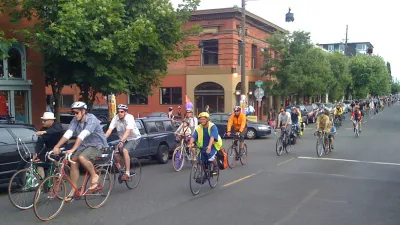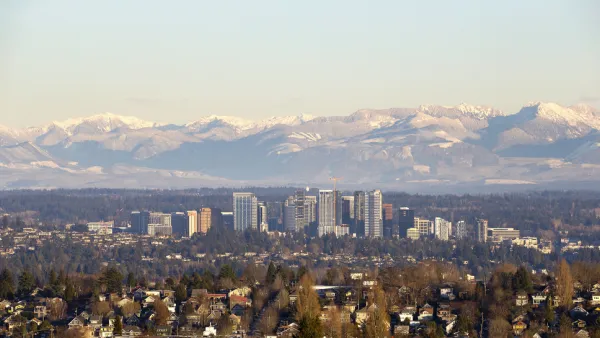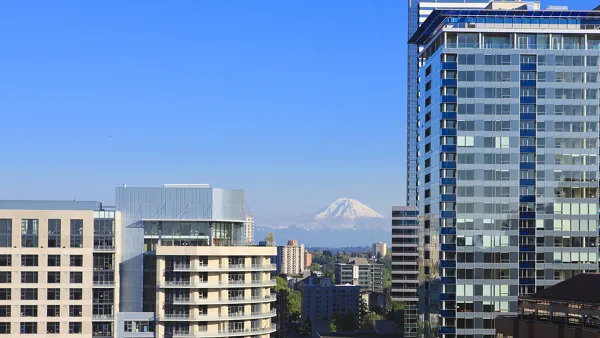While bike commuting is gaining nationwide, it's actually dropping in Portland which has held the enviable title of tops in bike commuting for large cities since 2005. Minneapolis and Seattle, #2 and #3 respectively, are gaining, warns BikePortland.

BikePortland's news editor, Michael Andersen, writes that according to the latest Census' American Community Survey estimates, the city's bike commuting rate dropped "from 6.3 percent to 6.1 percent of the city's working population. Across the whole Portland metro area, bike use held at 2.3 percent."
Minneapolis' bike mode share jumped from 3.4 to 4.5 percent, the sort of increase Portland hasn't seen since the 2007 gas spike. Seattle's rose from 3.5 to 4.1 percent. In each of those cities, the bike-commuting population grew by about 3,000 workers [compared to Portland's decrease of 65].
Worse yet, the drop is not restricted to cycling. "Public transit use in Portland dropped relatively sharply last year, from 13 percent to 11.1 percent of workers in the city limit" while the drive-alone rate increased "from 57.9 to 58.5 percent", Andersen writes.
The only positive commuting data was for walking which increased "from 4.9 percent to 6.9 percent, the highest walking mode share on record and the first time since 2007 that walking to work has been more popular among Portlanders than biking," he writes. Good news for walking was seen "in similar cities, too: from 9 percent to 9.9 percent in Seattle and from 5.8 to 7 percent in Minneapolis."
So, in terms of bike commuting, what are Minneapolis and Seattle doing that Portland isn't? Andersen doesn't explore that question, though in a July piece, he offers five explanations in response to, "What caused Portland's biking boom?"
Is it possible that there is a biking 'plateau', and Portland has reached it? Compare Portland's aforementioned commuting rates to the nation's to put it in perspective: "biking (0.6 percent), walking (2.8 percent), riding transit (5 percent) and driving alone (76.3 percent)".
FULL STORY: Census: Portland biking stalls for fifth year while other cities climb

National Parks Layoffs Will Cause Communities to Lose Billions
Thousands of essential park workers were laid off this week, just before the busy spring break season.

Retro-silient?: America’s First “Eco-burb,” The Woodlands Turns 50
A master-planned community north of Houston offers lessons on green infrastructure and resilient design, but falls short of its founder’s lofty affordability and walkability goals.

Delivering for America Plan Will Downgrade Mail Service in at Least 49.5 Percent of Zip Codes
Republican and Democrat lawmakers criticize the plan for its disproportionate negative impact on rural communities.

Test News Post 1
This is a summary

Test News Headline 46
Test for the image on the front page.

Balancing Bombs and Butterflies: How the National Guard Protects a Rare Species
The National Guard at Fort Indiantown Gap uses GIS technology and land management strategies to balance military training with conservation efforts, ensuring the survival of the rare eastern regal fritillary butterfly.
Urban Design for Planners 1: Software Tools
This six-course series explores essential urban design concepts using open source software and equips planners with the tools they need to participate fully in the urban design process.
Planning for Universal Design
Learn the tools for implementing Universal Design in planning regulations.
EMC Planning Group, Inc.
Planetizen
Planetizen
Mpact (formerly Rail~Volution)
Great Falls Development Authority, Inc.
HUDs Office of Policy Development and Research
NYU Wagner Graduate School of Public Service





























